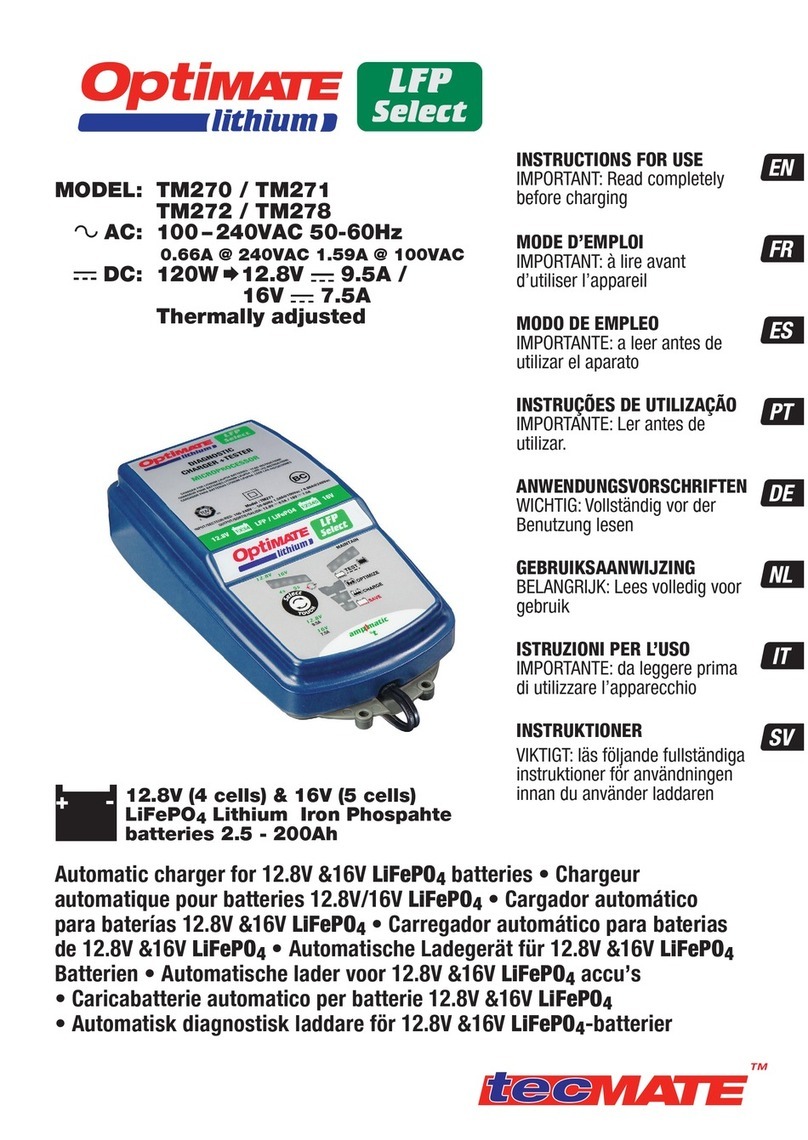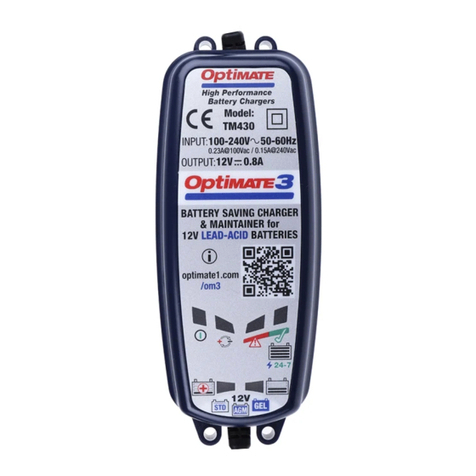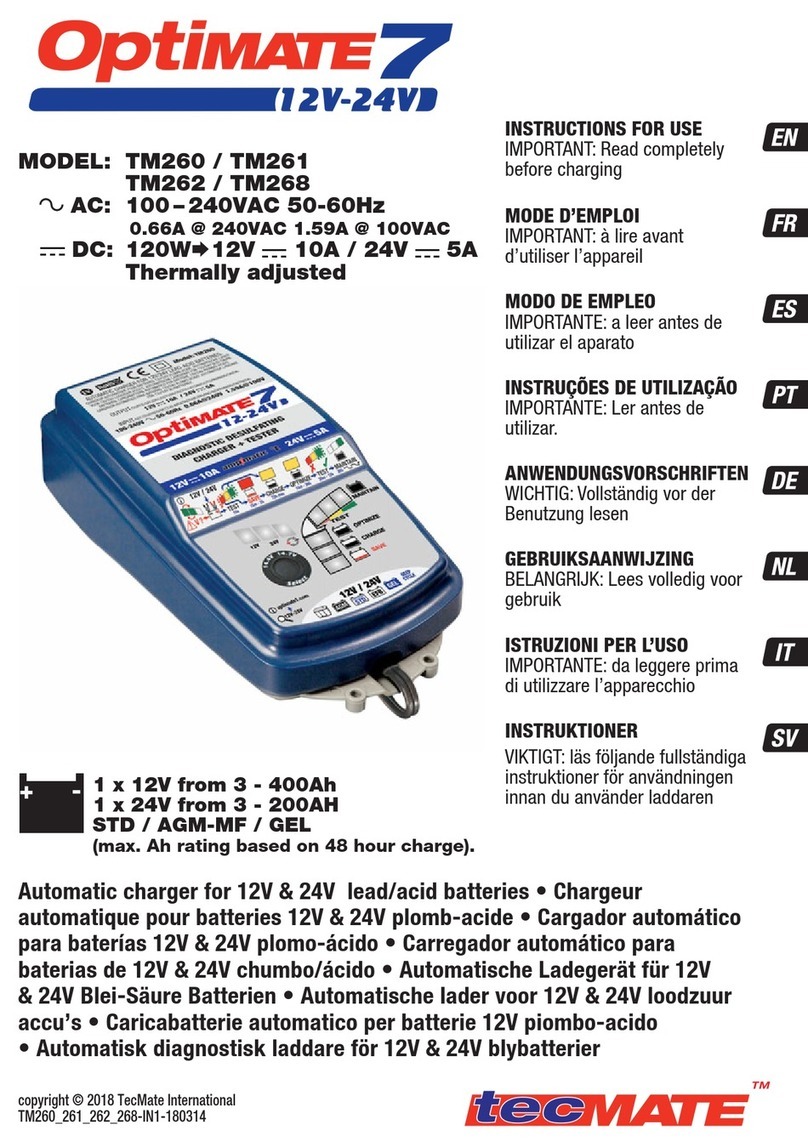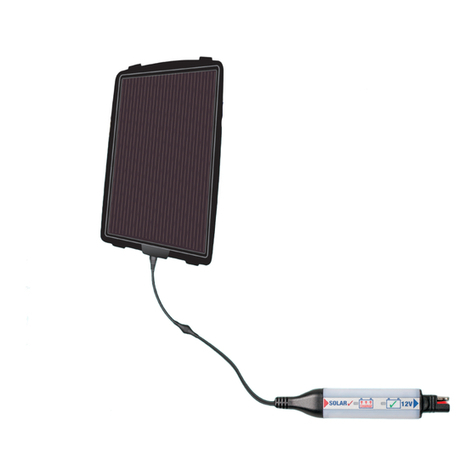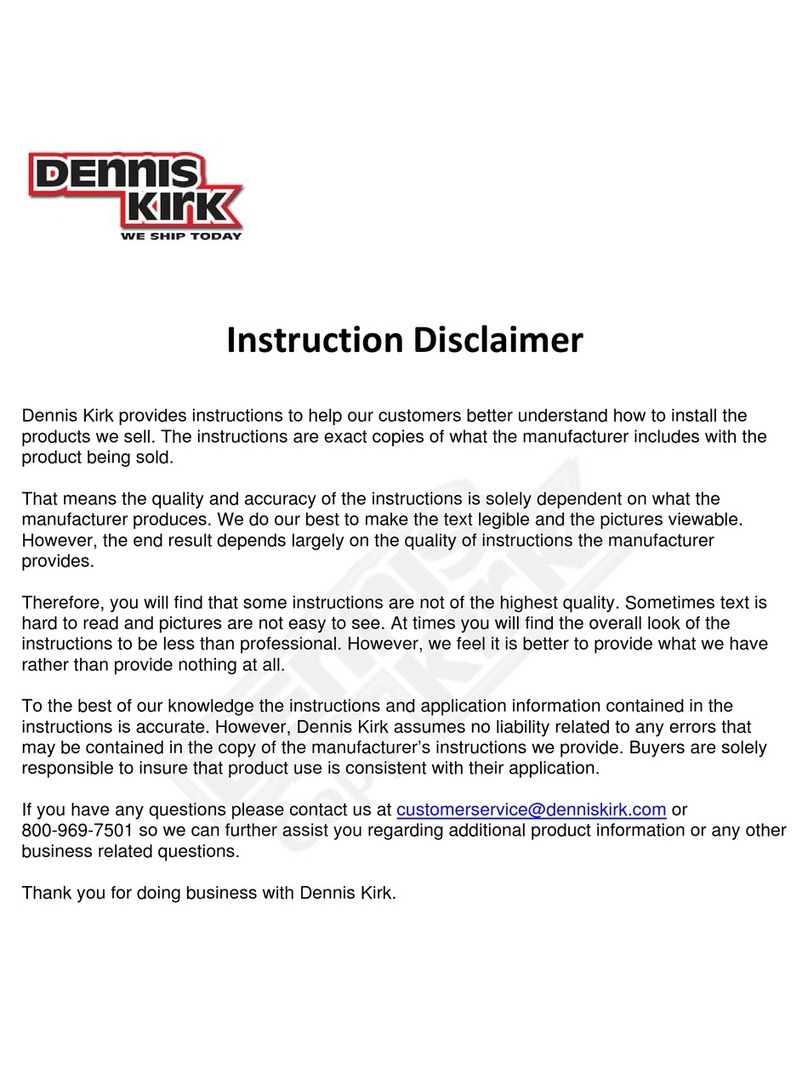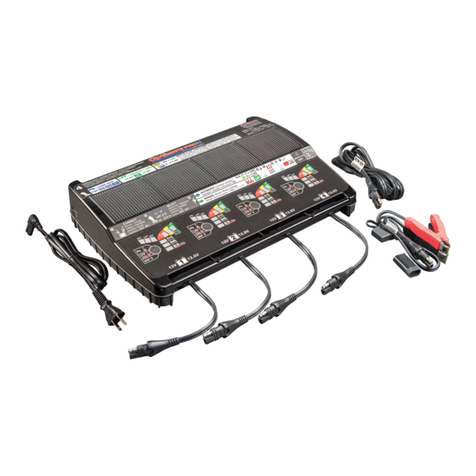
9
MAINTAINING A BATTERY FOR EXTENDED PERIODS: For accurate temperature regulated charging and long
term maintenance place OptiMate as close as possible to the battery under charge. For example, if the
battery is within a vehicle or craft stored outside in direct sun or cold, place the OptiMate inside the vehicle or craft
(or its battery compartment) so that charge voltage is adjusted according to the same environment temperature
that the battery would experience.
The OptiMate will maintain a battery whos basic condition is good, for months at a time. At least once every two
weeks, check that the connections between the charger and battery are secure, and, in the case of batteries with
filler caps on each cell, disconnect the battery from the charger, check the level of the electrolyte and if necessary,
top up the cells (with distilled water, NOT acid), then reconnect. When handling batteries or in their vicinity, always
take care to observe the SAFETY WARNINGS above.
VERY FLAT NEGLECTED BATTERIES: If the battery is deeply discharged (and possibly sulfated), remove from
the vehicle or equipment and inspect the battery before connecting the charger for a recovery attempt. The
charger’s recovery mode may not engage if it senses that the battery is still connected to a circuit which
effectively offers a lower electrical resistance than the battery on its own. However, if the deep-discharged battery
is not removed for recovery, neither battery nor vehicle or equipment electronics will be damaged. Pay particularly
close attention to the following A battery left deep-discharged for an extended period may develop permanent
damage in one or more cells. Such batteries may heat up excessively during high current charging.
Monitor the battery temperature during the first hour, then hourly there-after. Check for unusual signs, such as
bubbling or leaking electrolyte, heightened activity in one cell compared to others, or hissing sounds. If at any time
the battery is uncomfortably hot to touch or you notice any unusual signs, DISCONNECT THE CHARGER
IMMEDIATELY.
NOTES ON TEST RESULTS:
1. For any test result other than green #6 (or green #6 and yellow #7 together if the battery is a STD type with filler
caps), disconnect the battery from the electrical system it supports, and reconnect the OptiMate. If a better test
result is now obtained, this suggests that the power losses are partly due to an electrical problem in the electrical
system and not in the battery itself.
2. If the red LED #8 alone, or the yellow #7 and red LED #8 indicate together, or yellow #7 LED alone for a sealed
battery, a significant problem exists. The battery is unable to retain sufficient charge or is losing charge very fast
due to connected circuitry. A sudden load being switched on while the charger is connected can also cause the
battery voltage to dip significantly.
3. GOOD TEST RESULT, but the battery cannot deliver sufficient power: Degraded inter-cell connections or poor
external connection at battery posts may cause severe voltage drop when high current is demanded from the
battery. Check external battery connections or have battery professionally assessed (load tested).
ECO POWER SAVING MODE WHEN THE CHARGER IS CONNECTED TO AC SUPPLY:
The power converter switches to ECO mode when the charger is not connected to a battery resulting in a very low
power draw of less than 0.5W, equivalent to power consumption of 0.012 kWh per day. When a battery is
connected to the charger power consumption depends on the current demand of the battery and its connected
vehicle / electronic circuitry. After the battery has been charged and the charger is in long term maintenance
charge mode (to keep the battery at 100% charge) the total power consumption is estimated to be 0.024kWh or
less per day.
LIMITED WARRANTY
TecMate (International) SA, B-3300 Tienen, Belgium, offers this limited warranty to the original purchaser at retail of this
product. This limited warranty is not transferable. TecMate (International) warrants this battery charger for three years from
date of purchase at retail against defective material or workmanship. If such should occur the unit will be repaired or replaced
at the option of the manufacturer. It is the obligation of the purchaser to forward the unit together with proof of purchase (see
NOTE), transportation or mailing costs prepaid, to the manufacturer or its authorized representative. This limited warranty is
void if the product is misused, subjected to careless handling, or repaired by anyone other than the factory or its authorized
representative. The manufacturer makes no warranty other than this limited warranty and expressly excludes any implied
warranty including any warranty for consequential damages.
THIS IS THE ONLY EXPRESS LIMITED WARRANTY AND THE MANUFACTURER NEITHER ASSUMES NOR AUTHORIZES ANYONE TO
ASSUME OR MAKE ANY OTHER OBLIGATION TOWARDS THE PRODUCT OTHER THAN THIS EXPRESS LIMITED WARRANTY. YOUR
STATUTORY RIGHTS ARE NOT AFFECTED.
NOTE: Details at www.tecmate.com/warranty.
WARRANTY in Canada, USA, Central America and South America:
TecMate North America, Oakville, ON, Canada, as a wholy owned subsidiary of TecMate International, assumes the
responsibility for product warranty in these regions.
